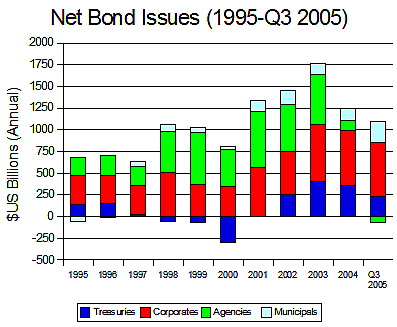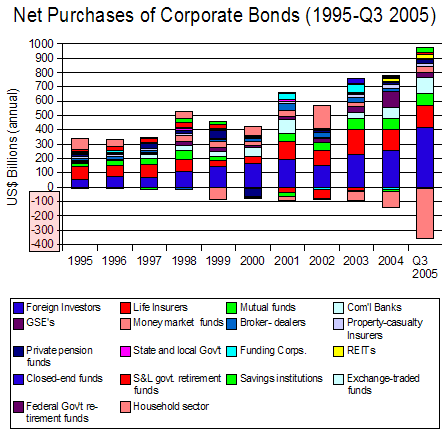Congressional Proposals May Reduce Funding for U.S. Bond Market
by John Schroy filed under Treasuries, Open Market, Agencies, Mortgages, Municipals, Corporate Bonds, Government Officials
The U.S. Congress, with bipartisan support, is considering legislation that could reduce the flow of funds into the U.S. bond market, cut financing for the War on Terror and support for the real estate market, increase long-term interest rates, and slow economic growth.
The purpose of this proposed legislation is to eliminate the trade deficit with China.
The U.S. Constitution gives Congress the prerogative to regulate international commerce,
About 25% of the trade deficit relates to the China trade.
Funds originating from the trade deficit are a major source of financing for the U.S. bond market.




